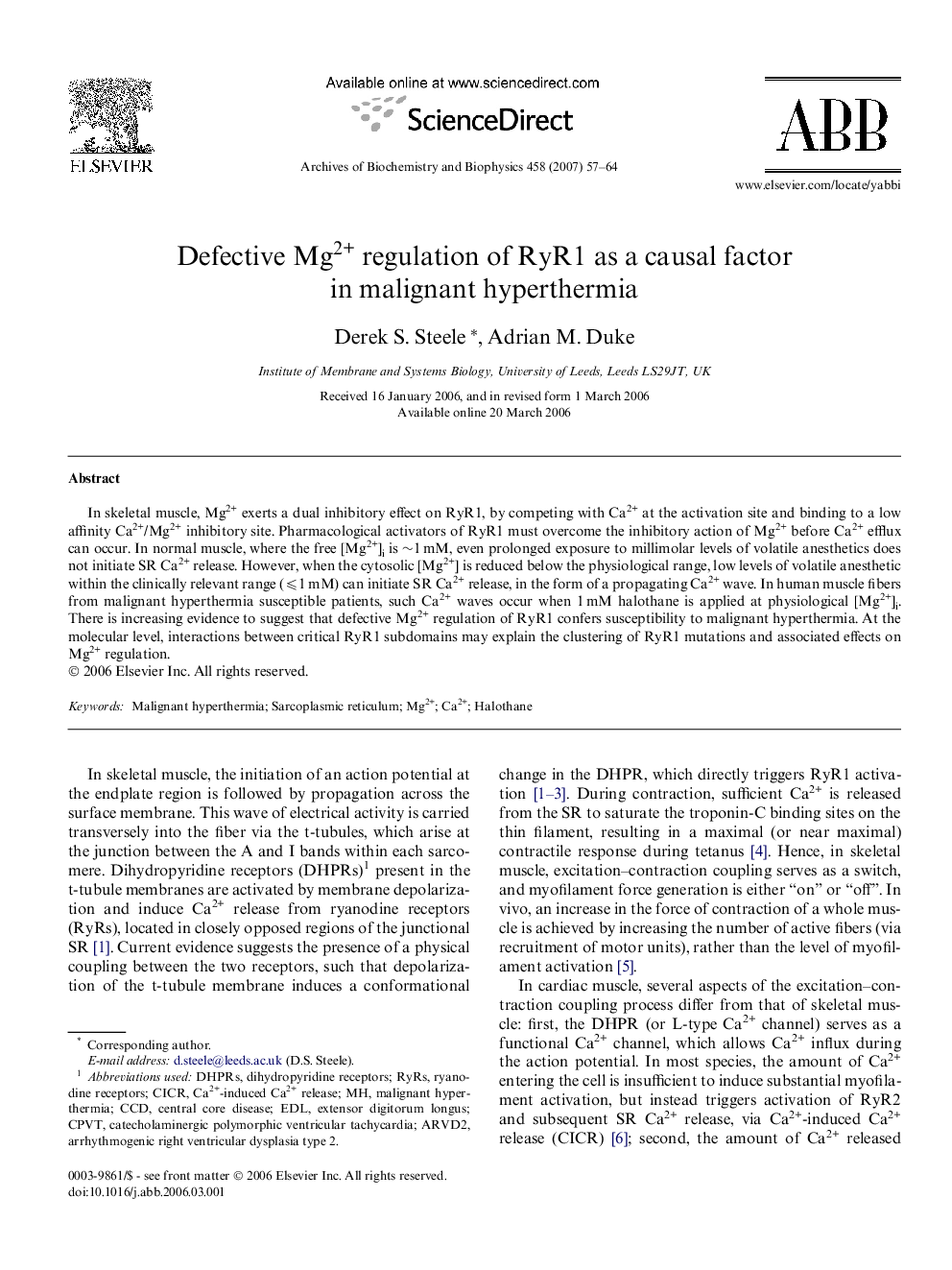| Article ID | Journal | Published Year | Pages | File Type |
|---|---|---|---|---|
| 1927275 | Archives of Biochemistry and Biophysics | 2007 | 8 Pages |
In skeletal muscle, Mg2+ exerts a dual inhibitory effect on RyR1, by competing with Ca2+ at the activation site and binding to a low affinity Ca2+/Mg2+ inhibitory site. Pharmacological activators of RyR1 must overcome the inhibitory action of Mg2+ before Ca2+ efflux can occur. In normal muscle, where the free [Mg2+]i is ∼1 mM, even prolonged exposure to millimolar levels of volatile anesthetics does not initiate SR Ca2+ release. However, when the cytosolic [Mg2+] is reduced below the physiological range, low levels of volatile anesthetic within the clinically relevant range (⩽1 mM) can initiate SR Ca2+ release, in the form of a propagating Ca2+ wave. In human muscle fibers from malignant hyperthermia susceptible patients, such Ca2+ waves occur when 1 mM halothane is applied at physiological [Mg2+]i. There is increasing evidence to suggest that defective Mg2+ regulation of RyR1 confers susceptibility to malignant hyperthermia. At the molecular level, interactions between critical RyR1 subdomains may explain the clustering of RyR1 mutations and associated effects on Mg2+ regulation.
